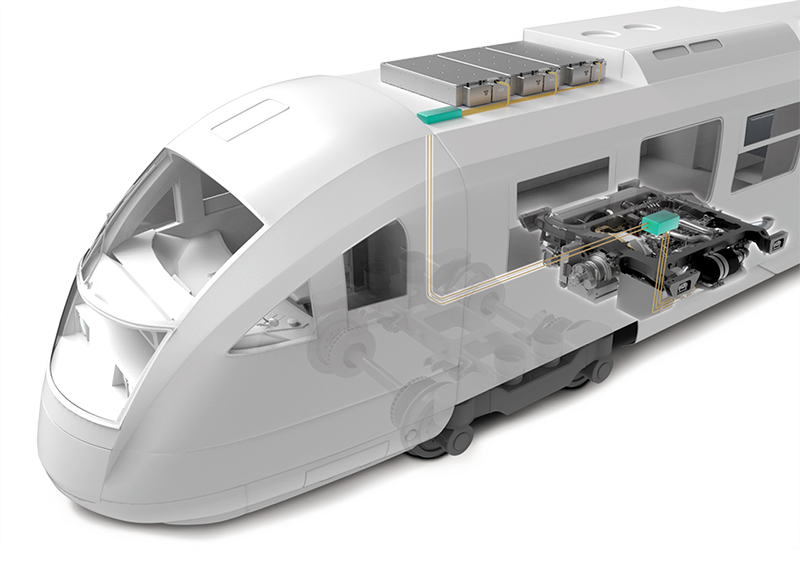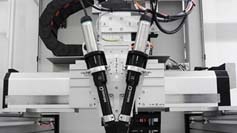Hybrid drive technology for rail vehicles
Less fuel consumption, fewer emissions, less noise, lower costs – the hybrid drive technology for diesel powered rail vehicles which was jointly developed to market maturity by MTU Friedrichshafen GmbH and WITTENSTEIN promises to deliver all of that. The electric drives and the power electronics for the Hybrid PowerPack were contributed by WITTENSTEIN cyber motor.
A solution with future potential
Two electric motors with around 200 kW of continuous power output form a so-called parallel hybrid configuration together with the diesel engines, which deliver up to 390 kW. The vehicles can be driven by the diesel engines alone or run temporarily in pure electric mode or, for enhanced performance, using a combination of diesel engine and electric motor. The Hybrid PowerPack reduces diesel consumption by up to 25 per cent and NOx emissions by as much as 20 percent. Locomotives equipped with hybrid drives enable low-noise operations in railway stations – up to 21 decibels quieter than diesel trains. Finally, the use of hybrid technology allows nonelectrified branch lines to be operated more affordably and disused lines recommissioned if necessary without the high costs normally associated with electrification. This all adds up to enormous future potential for hybrid drive technologies.
MTU Friedrichshafen: A pioneer of PowerPack technology
MTU Friedrichshafen GmbH is one of the world’s leading manufacturers of large diesel engines and complete propulsion systems. They are used, among other things, in ships, power generation systems, heavy land and rail vehicles. The Rail PowerPack launched by MTU in 1996 is a drive module integrating all of a diesel drive’s components in a standardized underfloor unit. Not only fitting vehicles with original equipment but also maintenance and retrofits were made much simpler and more affordable as a result. MTU-built diesel PowerPacks currently drive some 6000 low-floor vehicles from a variety of manufacturers.
The right development partner is key
The MTU project for a hybrid diesel-electric drive kicked off about ten years ago. The original idea of developing the electric motor and the power electronics in-house later gave way to a development partnership with a specialist in the field. WITTENSTEIN did not simply convince with profound know-how and expertise in technology development and project management; we were also able to provide the manufacturing capabilities for future series production. A concept study was initially agreed in 2014. This led to a development order and eventually to the first close-to-series prototype in 2016. Parallel to this, MTU subjected the hybrid drive technology to a series of pilot tests, which demonstrated the benefits – previously only simulated – in practical duty, namely lower fuel consumption, reduced emissions and noise avoidance.








